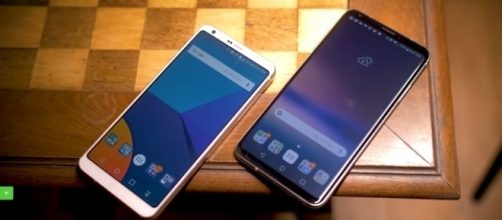The LG G6 became a game changer when it comes to display, with its unusual 18:9 aspect ratio than the 16:9 aspect ratio the majority of smartphones have. Samsung followed suit when the company unveiled its latest flagship phones, the Samsung Galaxy S8 and S8 Plus, which also boasted the same aspect ratio.
This type of display on a smartphone has become so popular that Google and Apple will reportedly bring this design onto their next flagship devices, the Google Pixel 2 and iPhone 8, respectively.
Meanwhile, LG already made a follow-up device to their V series which also sports the same unique design – the LG V30.
See how it compares to the LG G6 as reported by Android Authority.
Design
Both the LG G6 and the LG V30 have the same rounded corners on their display. However, while the former has flat edges on its sides, LG designed the latter with curved sides, which made it look more like the Galaxy S8 Plus. And even though the V30 has a 6-inch screen compared to G6’s 5.7-inch, LG was able to make the V30 a few grams lighter than the G6.
The V30 has kept the dual camera design at the back with the fingerprint scanner comfortably located below, just like the G6.
Specs and features
One of the most notable differences between the G6 and the V30 is its screen. The latter now sports an OLED display compared to the G6’s LCD.
This change by LG makes the V30 much brighter and displays better contrast and more beautiful colors. Perhaps LG is trying to catch up with Samsung’s more advanced OLED technology?
While many have criticized LG for using a much older Snapdragon 821 on their G6, the company has opted to use the much more up-to-date Snapdragon 835 on the V30, making it much faster and more buttery smooth than the G6.
In addition, the V30’s 64GB and 128GB variants will both have 4GB of RAM. And more importantly, both the wireless charging and Quad DAC features will be available on all variants of the V30, something that LG G6 fans have been complaining about for a long time.
Camera
LG has made a few improvements when it comes to the V30’s camera, something that is expected on a new device.
The V30 now sports a 16-megapixel standard lens and a 13-megapixel wide angle lens at the back of the device. The company also opted to use glass lens for the camera for better image quality because more light can now reach the sensor compared to plastic lenses.
Overall, the V30 is hands down the much better device. However, this doesn’t mean that the G6 has become obsolete as it remains one of the most powerful and most beautifully designed smartphones available today.


